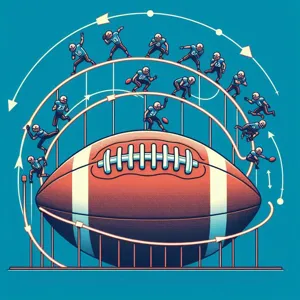As the roar of the crowd electrifies stadiums across the country and the excitement of each game day draws fans together, American football stands as a pillar of community and passion.
But it’s not just the athletes on the field who contribute to the thrilling atmosphere; the true heart of the game lies in its fans. whether you’re a lifelong supporter or a newcomer eager to immerse yourself in this beloved sport, finding ways to engage with the game can deepen your appreciation and enhance your experience. In this blog post, we’ll explore ten dynamic strategies to elevate your involvement in American football, from joining local fan clubs and participating in fantasy leagues to attending games and connecting with players through social media. Get ready to unlock the full potential of your fan experience and embrace the camaraderie, excitement, and joy that American football has to offer!
1. Understanding Fan Engagement in American Football
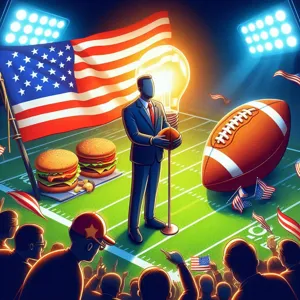
Understanding fan engagement in American football is the cornerstone of building a vibrant and loyal community around the sport. At its heart, fan engagement goes beyond mere attendance at games or following teams on social media; it’s about forging a deep emotional connection with the game, the players, and the overall experience that American football brings.
Fans are not just spectators; they are passionate advocates who live and breathe every touchdown, tackle, and triumph. This unique emotional investment can manifest in various ways, from tailgating traditions and spirited discussions in online forums to fervent participation in fantasy leagues and social media interactions. The thrill of victory and the agony of defeat resonate deeply, and it’s this emotional rollercoaster that keeps fans coming back for more.
To truly understand fan engagement, one must recognize its multifaceted nature. It encompasses immediate interactions, like cheering from the stands and sharing game-day experiences on platforms like Twitter and Instagram, as well as long-term relationships built through loyalty programs, community events, and merchandise sales. It’s about creating memorable moments that fans will cherish and talk about long after the final whistle blows.
Moreover, engaging with fans means acknowledging their voices and opinions. Whether it’s through surveys, fan forums, or direct conversations on social media, listening to what fans want can lead to a more enriched experience. Understanding their motivations, preferences, and cultural backgrounds can help organizations tailor their strategies to foster an inclusive and welcoming environment for all.
In essence, fan engagement in American football is a dynamic and evolving landscape that requires ongoing effort and creativity. By embracing this understanding, teams, leagues, and organizations can unlock the full potential of their fan base, leading to increased loyalty, higher attendance, and a richer football culture overall.
2. The Importance of Community in Football Culture
Football is more than just a game; it’s a vibrant community that thrives on shared passion, camaraderie, and collective experiences. The importance of community in football culture cannot be overstated, as it serves as the backbone that unites fans, players, and local organizations alike. Whether you’re cheering for your favorite NFL team or supporting a local high school squad, the thrill of the game is amplified when experienced alongside others.
At the heart of this community is the sense of belonging that comes from rallying together in support of a common goal. Football fans often forge deep connections with one another, creating friendships that extend far beyond the confines of the stadium. Tailgating before games, participating in watch parties, and engaging in spirited discussions about plays and players all contribute to a rich tapestry of interaction that makes the sport so special.
Moreover, community involvement fosters a sense of pride and identity. Fans don jerseys emblazoned with their team colors, decorate their homes with memorabilia, and share their enthusiasm with family and friends, all of which cultivates a shared narrative that binds them together. This connection is especially potent during local events such as youth leagues, charity games, or fundraisers, where the love for football serves as a catalyst for collaboration and support.
As you immerse yourself in football culture, consider ways to engage with your local community. Attend games not just as a spectator, but as an active participant. Volunteer for local football initiatives, support youth programs, or simply join in on community discussions online. By doing so, you not only deepen your own connection to the sport but also contribute to the thriving community that makes football a cherished American pastime. Embrace the power of community, and unlock a richer, more fulfilling experience as a football fan!
3. Attend Local High School Games
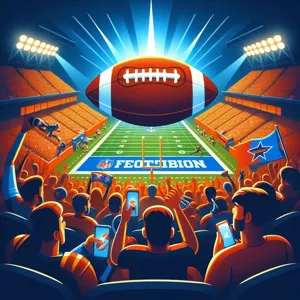
Attending local high school football games is one of the most rewarding ways to engage with the sport and its community. These games are often the heartbeat of small towns and cities, bringing together families, friends, and neighbors in a vibrant atmosphere filled with excitement and camaraderie. As the sun sets and the stadium lights flicker on, the air buzzes with anticipation. You’ll hear the cheerful sounds of the marching band, the spirited cheers from the crowd, and the unmistakable thud of players colliding on the field.
By attending these games, you’re not just watching budding athletes showcase their talents; you’re supporting the future of the sport. High school athletes pour their hearts into each play, representing their schools and communities with pride. These games are a treasure trove of raw talent and potential — you might even spot future college stars or NFL players in action!
Moreover, being present at these events allows you to connect with fellow fans and families, fostering a sense of community and shared passion. Strike up conversations in the stands, cheer together for your local team, and forge connections that extend beyond the game. You can also take part in tailgating festivities, where fans gather to share food, laughter, and stories, creating an inclusive and enjoyable environment for everyone.
So, grab your jersey, rally your friends, and head to the nearest high school football game. Not only will you witness the thrill of the game, but you’ll also become an integral part of the local football culture, fueling your passion for the sport while supporting the next generation of players.
4. Join a Fantasy Football League
Joining a Fantasy Football League is one of the most exhilarating ways to deepen your connection with the game and its players. Not only does it allow you to engage in friendly competition, but it also transforms you from a casual viewer into an active participant in the season’s unfolding drama.
Imagine drafting your dream team from the pool of NFL players, carefully weighing each decision based on stats, player performance, and even the latest injury reports. The excitement builds as you follow your players each week, cheering them on as they rack up points for your fantasy team. The thrill of watching a player you selected score a game-winning touchdown is unparalleled—it feels like a personal victory, amplifying the joy of the sport.
Participating in a fantasy league also fosters camaraderie among friends, family, or co-workers. The banter that ensues from weekly matchups, trade negotiations, and smack talk adds an extra layer of fun to your football Sundays. You’ll find yourself eagerly discussing strategies, sharing insights, and even collaborating on league rules, creating lasting bonds over your shared passion.
Moreover, many platforms offer robust tools and resources to help you stay engaged—live drafts, expert analysis, and real-time updates keep you on top of your game. Whether you’re a seasoned strategist or a newcomer eager to learn the ropes, joining a Fantasy Football League can reignite your passion for American football, making every game day feel like an event to celebrate.
So, gather your friends, choose a platform, and get ready to dive into the exhilarating world of fantasy football. Your journey to becoming a die-hard fan starts here!
5. Participate in Team-Sponsored Events and Clinics
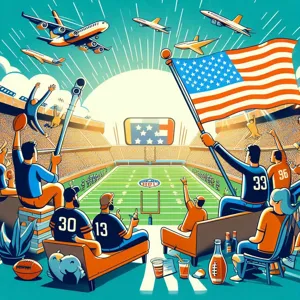
Participating in team-sponsored events and clinics is one of the most interactive and rewarding ways to engage with your favorite American football team. These events not only provide a unique opportunity to meet players and coaches but also allow fans to immerse themselves in the sport they love.
Many professional teams host a variety of activities throughout the year, ranging from youth football camps aimed at aspiring players to fan festivals that celebrate the team’s culture. Imagine attending a summer camp where you can refine your skills under the guidance of experienced coaches and even some of your favorite players. Such clinics often cover fundamental techniques, position-specific drills, and even the mental aspects of the game, making it a fantastic learning experience for both kids and adults alike.
Additionally, team-sponsored events often include meet-and-greet sessions, where fans can get autographs, take photos, and engage in Q&A sessions with players. This personal interaction not only deepens your connection to the team but also creates lasting memories.
Moreover, these events foster a sense of community among fans. You’ll find yourself surrounded by fellow enthusiasts, all sharing the same passion for the game. Building friendships in this environment can enhance your overall experience and keep you excited for the season ahead.
Don’t forget the charitable events many teams organize, such as food drives, charity runs, or community service days. Participating in these initiatives not only supports a great cause but also strengthens your bond with the team and its mission.
In short, engaging in team-sponsored events and clinics is a fantastic way to unlock a deeper level of fan engagement, bringing you closer to the action, the players, and the community surrounding American football. So, keep an eye on your team’s calendar and get ready to dive into the excitement!
6. Volunteer for Community Outreach Programs
Volunteering for community outreach programs is a powerful way to connect with fellow fans and make a lasting impact on your community while embracing the spirit of American football. Beyond the thrilling touchdowns and nail-biting moments on the field, football has always been about bringing people together—fostering camaraderie, support, and teamwork, both on and off the gridiron. By lending your time and skills to local initiatives, you not only enhance your own experience as a fan but also contribute to the greater good.
Imagine spending your weekends coaching youth football teams, helping at community sports clinics, or participating in clean-up drives at local parks. These opportunities often allow you to share your passion for the game with younger generations, instilling a love of football while teaching them valuable life skills like discipline, teamwork, and sportsmanship. Whether you’re distributing equipment, mentoring young athletes, or organizing events to promote healthy lifestyles, your involvement can inspire and empower those around you.
Moreover, many professional and college teams have their own community outreach programs that welcome fan participation. By volunteering at these events, you can meet like-minded individuals who share your enthusiasm for the sport, all while engaging with the team you adore. It’s a chance to wear your colors proudly, connect with players and coaches off the field, and witness the positive effects of football in your community firsthand.
Additionally, volunteering creates a sense of belonging and purpose. It allows you to forge meaningful relationships, not just with other fans but with diverse groups that benefit from your efforts. So, roll up your sleeves and get involved! Whether it’s organizing a charity game, participating in food drives, or volunteering at fundraising events, your contributions will not only enhance the lives of others but also deepen your own connection to the sport you love. After all, genuine fan engagement goes beyond cheering from the stands; it’s about uplifting your community and showing that football is truly a game for everyone.
7. Engage on Social Media Platforms
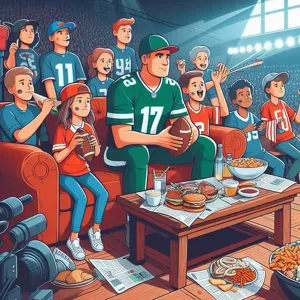
In the digital age, social media platforms serve as the heartbeat of fan engagement, making them an essential tool for connecting with fellow football enthusiasts. Engaging on platforms like Twitter, Instagram, Facebook, and TikTok allows fans to immerse themselves in the vibrant world of American football beyond just the game day experience.
Start by following your favorite teams, players, and football-related hashtags to stay updated with real-time news, analysis, and behind-the-scenes content. Engage actively by liking, sharing, and commenting on posts that resonate with your passion. This interaction fosters a sense of community and belonging among fans who share your enthusiasm.
Consider creating your own content—whether it’s insightful commentary, game predictions, or humorous takes on football memes. Sharing your unique perspective can attract other fans to your profile and spark lively discussions. Live-tweeting during games or posting reaction videos can also elevate your engagement, allowing you to connect with others experiencing the game in real-time.
Don’t forget to participate in fan polls and Q&A sessions hosted by teams or sports analysts. These opportunities can give you a voice in the community and show the teams that their fans are engaged and invested. By consistently interacting on social media, you not only enhance your own experience but also contribute to the collective excitement that makes being a football fan so exhilarating. Embrace the power of social media to cheer, debate, and celebrate the sport you love!
8. Create or Join a Supporters’ Group
Creating or joining a supporters’ group can be one of the most rewarding ways to deepen your involvement in American football. These groups serve as a vibrant community hub where fans come together to share their passion for the game, discuss strategies, and celebrate their team’s victories. Whether you’re a die-hard fan or a newcomer to the sport, becoming part of a supporters’ group can enhance your experience in ways you might not expect.
When you join a supporters’ group, you instantly gain access to a network of like-minded individuals who share your enthusiasm. These groups often organize events such as watch parties, tailgates, and meet-and-greets with former players, providing you with memorable experiences and the chance to build friendships that extend beyond the field. The camaraderie of fellow fans amplifies the excitement of game days, turning every match into a shared adventure.
If you’re feeling adventurous, consider starting your own supporters’ group! This is a fantastic way to connect with others in your local community who share your passion. You can host events, create a social media presence, and even collaborate with local businesses for sponsorships and promotions. Establishing a unique identity for your group—complete with a name, logo, and maybe even some custom merchandise—can foster a sense of belonging and pride among members.
In addition to enhancing your personal experience, supporters’ groups often play a crucial role in advocating for fans’ interests and creating a positive atmosphere at games. Many groups engage in charitable activities, helping to raise funds for local causes while simultaneously promoting the spirit of sportsmanship and community involvement. By participating in these initiatives, you not only show your love for the game but also contribute to the greater good.
In essence, whether you choose to create a new supporters’ group or join an existing one, this approach to fan engagement will enrich your love for American football and connect you with an enthusiastic community. So grab your jersey, rally your friends, and get ready to cheer—together, you’ll make every game unforgettable!
9. Invest in Team Merchandise and Gear
Investing in team merchandise and gear is one of the most effective ways to immerse yourself in the vibrant culture of American football while simultaneously showing your support for your favorite team. From jerseys and hats to hoodies and collectibles, wearing your team’s colors not only showcases your allegiance but also fosters a sense of community among fellow fans.
Imagine walking into a game decked out in your team’s jersey, the fabric vibrant and alive with the emblem of your favorite players. It’s more than just clothing; it’s a badge of honor, a way to connect with other fans who share your passion. When you don the colors of your team, you become part of a larger narrative, a collective experience that transcends individual games and seasons.
Moreover, investing in quality merchandise can enhance your game-day experience. Whether you’re hosting a viewing party at home or attending the game in person, wearing the right gear can amplify the excitement. Think of a cozy team hoodie to keep you warm during those chilly night games or a stylish cap to shield you from the sun while you cheer in the stands.
Don’t overlook the power of collectibles, either. Items like signed footballs, limited-edition jerseys, and vintage memorabilia not only serve as conversation starters but also represent your commitment to the team. As you build your collection, you create a personal history intertwined with the team’s journey, making every game more meaningful.
In addition to enhancing your own experience, purchasing team merchandise directly supports your favorite franchise. The revenue generated from merchandise sales helps teams invest in better facilities, training programs, and community initiatives, ensuring the sport continues to thrive. So, whether you’re sporting the latest player jersey or adding a vintage item to your collection, remember that every purchase is a step deeper into the exhilarating world of American football fandom. Embrace the pride, the passion, and the camaraderie that comes with being an avid supporter, and watch as your engagement with the sport expands beyond the field.
10. Host Game-Day Viewing Parties
Hosting game-day viewing parties is an electrifying way to engage with fellow fans and create an unforgettable communal experience. Imagine the energy in the air as your living room transforms into a bustling sports bar, filled with friends, family, and neighbors all decked out in their favorite team colors. The aroma of delicious snacks wafts through the room, from crispy chicken wings and hearty nachos to gourmet sliders and veggie platters, ensuring that everyone’s taste buds are catered to during those nail-biting moments of the game.
To elevate the atmosphere, consider setting up a projector for an outdoor viewing experience or a large screen in your living room, where everyone can enjoy every touchdown, tackle, and thrilling play in high definition. Don’t forget to add a few decorations—team banners, jerseys, and even face paint can transform your space into a mini stadium. A great playlist leading up to kickoff can also set the tone, featuring your team’s fight song or popular game-day anthems.
Encourage friendly competition by organizing halftime games or trivia contests related to the teams playing, with fun prizes for the winners. You might even want to set up a bracket for the playoffs, engaging guests throughout the season and keeping the excitement alive.
Additionally, consider inviting a local food truck or catering service that specializes in game-day favorites to take the pressure off cooking, allowing you to fully enjoy the festivities. If you really want to amplify the experience, create a social media event page where your guests can RSVP, share photos, and post their predictions about the game.
By hosting game-day viewing parties, you create a space where fans can unite, celebrate their passion for American football, and deepen their connections with each other—all while creating lasting memories that will have everyone eagerly anticipating the next kickoff!
11. Explore Football Podcasts and Blogs
### 11. Explore Football Podcasts and Blogs
In the digital age, there’s no shortage of content dedicated to American football, and diving into the world of podcasts and blogs can significantly enhance your understanding and appreciation of the game. Whether you’re a lifelong fan or new to the sport, these platforms provide a treasure trove of insights, analysis, and commentary that can deepen your engagement.
Podcasts, in particular, offer an intimate way to connect with the game. With industry experts, former players, and passionate fans as hosts, these audio shows cover everything from in-depth game analysis to player interviews and team strategies. You can listen to them during your commute, while exercising, or even while cooking dinner, making it easy to fit football discussions into your busy schedule. Some popular podcasts delve into weekly game previews and recaps, while others may focus on historic moments or the evolution of coaching strategies, giving you a well-rounded view of the sport.
On the other hand, blogs provide a platform for detailed written content that can range from personal fan experiences to critical examinations of team performance and player statistics. Many bloggers are deeply embedded in the football community and offer unique perspectives that mainstream media often overlook. They cover topics like draft analysis, fantasy football tips, and even the cultural impact of the sport, making them perfect for fans looking to broaden their knowledge.
Engaging with both podcasts and blogs also opens the door to active participation. Many content creators encourage feedback, questions, and discussions, fostering a sense of community among listeners and readers. By commenting on posts or joining in on podcast discussions, you can connect with fellow fans and share your thoughts, creating a rich dialogue that enhances your experience of the game.
So, grab your headphones or your favorite device, and start exploring the vast landscape of football podcasts and blogs. You’ll find that they’re not just sources of information, but gateways to a deeper connection with the sport you love. Whether you’re looking to enhance your game-day experience or simply want to stay informed, these resources will keep your passion for American football alive and thriving year-round.
12. Attend NFL Training Camps and Open Practices
Attending NFL training camps and open practices is an invaluable opportunity for any die-hard football fan looking to deepen their connection with the game. As teams prepare for the upcoming season, these events provide a rare glimpse into the inner workings of professional football, allowing you to witness your favorite players up close and personal.
Imagine walking into the training facility, the air buzzing with excitement and anticipation, as fans gather to cheer on their teams during practice drills. You can hear the thud of footballs being caught, the whistle of coaches shouting instructions, and the laughter of players as they bond with one another on the field. Training camps often take place outdoors, giving you the chance to soak in the sun while enjoying the electrifying atmosphere that surrounds you.
Not only do you get to watch the players hone their skills, but many teams also host meet-and-greet sessions where fans can snag autographs and take photos with their favorite athletes. This intimate interaction helps solidify the connection between fans and players, transforming mere spectators into dedicated supporters.
Additionally, training camps often feature interactive activities, such as games, contests, and merchandise giveaways. These engaging experiences create a festive environment where you can connect with fellow fans, share your passion for the game, and even learn more about the sport itself.
So, grab your team colors, rally your friends or family, and head to your local NFL training camp or open practice. It’s an experience that not only deepens your appreciation for the game but also solidifies your role in the vibrant community of American football fans. You might just walk away with unforgettable memories and a renewed sense of excitement as the season approaches!
13. Participate in Tailgating Traditions
Tailgating is more than just a pre-game ritual; it’s a vibrant celebration steeped in camaraderie, food, and football fervor that truly embodies the spirit of American football. From the moment you arrive at the stadium parking lot, the air is filled with the tantalizing aromas of sizzling grills, hearty snacks, and the unmistakable scent of game day excitement. Participating in tailgating traditions offers a unique opportunity to bond with fellow fans, immerse yourself in the electric atmosphere, and create unforgettable memories.
To fully embrace the tailgating experience, start by gathering your friends and family, and donning your team colors with pride. Set up your grill and get cooking—whether it’s classic burgers, hot dogs, or inventive dishes like smoked brisket and homemade chili, the food is a centerpiece of the celebration. Don’t forget to bring along sides like potato salad, coleslaw, or an impressive spread of finger foods that will keep everyone fueled for the game ahead.
But tailgating isn’t just about the food—it’s about the people. Connect with fellow fans around you, share stories of past games, and engage in good-natured banter about your team’s chances that season. Many tailgaters bring games like cornhole or ladder toss, which adds a fun competitive edge to the festivities and fosters a sense of community among fans.
As kickoff approaches, gather everyone for a toast, perhaps with your favorite beverage, and partake in some spirited cheers or chants. These moments of togetherness create a special bond, enhancing the overall game day experience. Arriving early allows you to soak in the entire atmosphere, meet new friends, and celebrate the love of football together.
So, pack your cooler, fire up the grill, and dive headfirst into the tailgating tradition. It’s not just a prelude to the game; it’s an integral part of the American football experience that will keep you coming back season after season.
14. Share Your Football Journey: Writing and Blogging
Sharing your football journey through writing and blogging is a powerful way to connect with fellow fans, players, and aspiring athletes. Whether you’re recounting your experiences as a player, analyzing games, or discussing your favorite teams, your unique perspective can resonate with a wide audience.
Start by documenting your personal history with the sport. Share stories about your first game, the thrill of playing in high school, or the excitement of attending your first professional match. People are drawn to authentic narratives, and your experiences can inspire others who share your passion.
Consider creating a blog dedicated to football where you can explore various topics—from game strategies and player profiles to behind-the-scenes insights and fan culture. Regularly posting content not only keeps your audience engaged but also establishes you as a trusted voice in the football community.
Utilize social media platforms to amplify your writing. Share snippets of your blog posts, engage with other fans, and participate in conversations around trending topics. This not only increases your visibility but also encourages interaction with your content, fostering a sense of community among your readers.
Don’t hesitate to invite guest contributors or collaborate with other bloggers to broaden your reach and enrich your content. Engaging with others can lead to fresh ideas and perspectives, keeping your blog dynamic and interesting.
Above all, be passionate and consistent in your writing. When your enthusiasm for football shines through, it will captivate your audience, encouraging them to return for more. By sharing your football journey, you not only enhance your own experience but also contribute to the vibrant tapestry of American football culture.
15. Conclusion: Making Football a Part of Your Life
In conclusion, integrating football into your daily life can be both exhilarating and fulfilling. Whether you’re a lifelong fan or a newcomer to the sport, the key is to immerse yourself in the culture and community that surrounds American football. Attend local games, join fantasy leagues, or participate in discussions on social media; each of these activities allows you to connect with fellow enthusiasts and deepen your understanding of the game.
Consider hosting watch parties for big games, where friends and family can gather to cheer for their favorite teams, share delicious snacks, and engage in spirited debates about players and strategies. This not only fosters camaraderie but also creates lasting memories that celebrate the essence of football as a unifying force.
Don’t forget to explore the educational aspects of the sport. Watching documentaries, reading books, or listening to podcasts about football’s history and its impact on society can enrich your appreciation for the game. Understanding the stories behind the players, coaches, and iconic moments makes every touchdown feel personal and every defeat a shared experience.
Finally, embrace the spirit of teamwork and perseverance that football embodies. Whether you’re playing recreationally, volunteering with youth leagues, or simply cheering from the stands, let the passion for the game inspire you to engage with others, foster connections, and make football an enjoyable part of your life. By doing so, you’ll not only enhance your own experience but also contribute to the vibrant tapestry of the football community that spans the nation. So gear up, get involved, and let the love of the game lead you on this exciting journey!
As we wrap up our exploration of fan engagement in American football, we hope you’re feeling inspired to dive deeper into the vibrant world of this beloved sport. The ten strategies we’ve discussed are not just ways to support your favorite team; they are gateways to building connections with fellow fans, enhancing your game-day experience, and becoming an integral part of the football community. Whether you’re attending live games, participating in online discussions, or volunteering for local youth leagues, each action contributes to the rich tapestry of American football culture. So gear up, embrace your passion, and let every cheer and every interaction amplify your love for the game. Here’s to a thrilling season ahead—let’s make the most of it together!


